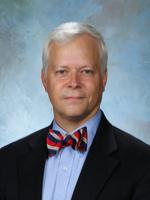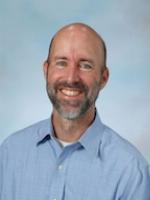Using STEm to Foster Creativity in the Middle School History Class
,
Colorado Convention Center, Bluebird Ballroom Lobby, Table 15
Presenters


Session description
Purpose & objective
The purpose of this presentation is to encourage teachers to reflect upon their history curriculum and whether or not it engages learners and encourages creativity. In order to make sure that teachers are preparing students for their future participates will discover how STEM can be used in the history classroom to understand concepts.
All lessons shared are created by the presenters and include strategies that are student-centered, encourage creativity, and allow for student choice. The STEM activities require students to apply historical concepts learning.
Outline
While Attendees walk-in: Who's in the Room? Survey with QR code
5 mins: Introduction including uncovering Who is in the. Room? survey and introduce session Padlet where participants can post questions/ideas/contact information
10 mins: Share the why and how to reenergize the middle school history curriculum
20 mins: Share details about 4 lessons that are created in history classes at different levels, also share student examples and reflections
- Lesson 1: 5th grade - Global Expo Artifact using the Engineering Design
- Lesson 2: 6th grade - Coding Robot to paths during Battles of the American Revolution
- Lesson 3: 7th grade - Monument Cad design
- Lesson 4: 8th grade - Ancient Civilization - choice project
*Rubrics will also be shared.
15 mins: Hands-on Engineering Design Activity (peer-to-peer interaction): Share the engineering cycle, give each table a historical topic. They collaborate and design. Share examples.
5 mins: Share goals and plans for the future and how we want to energize other curriculum areas with STEM
5 mins: Call for action: Let's connect and work on a project together and
Questions
Supporting research
Adventures in Authentic Learning
By: Kristin Harrington
Making Future-Ready Students with Design and the Internet of Things
By: J. Hughes, J. A. Robb, and M. Lam
https://eudl.eu/pdf/10.4108/eai.13-7-2018.163096
The interaction of history and STEM learning goals in teacher-developed curriculum materials: opportunities and challenges for STEAM education
By: Wonyong Park & Hohee Cho
https://link.springer.com/article/10.1007/s12564-022-09741-0#Sec14
Session specifications
Laptop: Chromebook, Mac, PC
Tablet: Android, iOS, Windows
Collaborator
- Dedicate planning time to collaborate with colleagues to create authentic learning experiences that leverage technology.
- Design authentic learning activities that align with content area standards and use digital tools and resources to maximize active, deep learning.
Innovative Designer
- Students know and use a deliberate design process for generating ideas, testing theories, creating innovative artifacts or solving authentic problems.
 Return
Return Participate and share: Poster
Participate and share: Poster  Trips and Tours
Trips and Tours